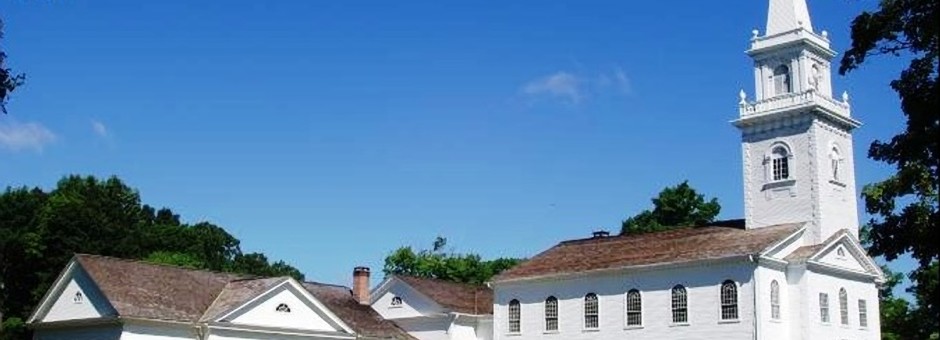 The organ is in a gallery-level case at the rear of the Sanctuary. Traditional style console with a keyboard cover that can be lifted to form a music rack. There is an attached keydesk en fenêtre.
The organ is in a gallery-level case at the rear of the Sanctuary. Traditional style console with a keyboard cover that can be lifted to form a music rack. There is an attached keydesk en fenêtre.
Two manuals, 13 stops.
Slider chests. Mechanical key action. Mechanical stop action.
Drawknobs in horizontal rows on terraced/stepped jambs. Balanced swell shoes/pedals. Combination Action: Fixed mechanical system. Concave radiating pedalboard. Crescendo Pedal.
The organ was rebuilt with electric action for the pedals and stops, and a combination action was added by Charles C. Aitken in 1973. The Aitken renovations to the instrument were largely reversed in a restoration in 1995 by Andover Organ Company, returning the instrument to a fully manual tracker action.
“The next stop was the Congregational Church in East Haddam, CT. This 1794 white frame meetinghouse was the oldest church building we visited on the Crawl. The church building retains many original features, including hand riven clapboards laid down with rose headed wrought nails, the original door with its hand forged iron hardware, box pews, original double hung window sash with much 18th century glass, and a very striking raised pulpit that has two “flying” spiral staircases. The pulpit is raised about 10 feet in the air; we were told by the gentleman who let us in that a speaker can be clearly heard all over the church without any artificial amplification at all, even though the building is not particularly live. Clearly modern architects and acousticians could learn a great deal h
“The organ is a two manual 13 George H. Ryder, his Opus 140 of 1891. Alas, this is an example of what not to do to an old organ: in 1973 an attempt was made to “modernize” the instrument. A rather cheaply made console with plastic keys was fitted to the organ, and the stop action was electrified. Several of the original stops were replaced, and the organ was revoiced in neo-Baroque style. In 1995 some of these changes were reversed by Andover, and a new mechanical action stop action was fitted to the instrument. Though the organ bears little resemblance to the original Ryder installation, it is still quite an effective instrument, no doubt due to Andover’s fine work.”
Stephen Roberts
American Guild of Organists (AGO
District Convener for CT and RI
Western Connecticut State University, Danbury, CT
Review of an AGO “Organ Crawl” conducted on February 20, 2012
(excerpted from a posting to Piporg-L)
For the Organ Historical Society pipe organ database listing for this organ, click here.




